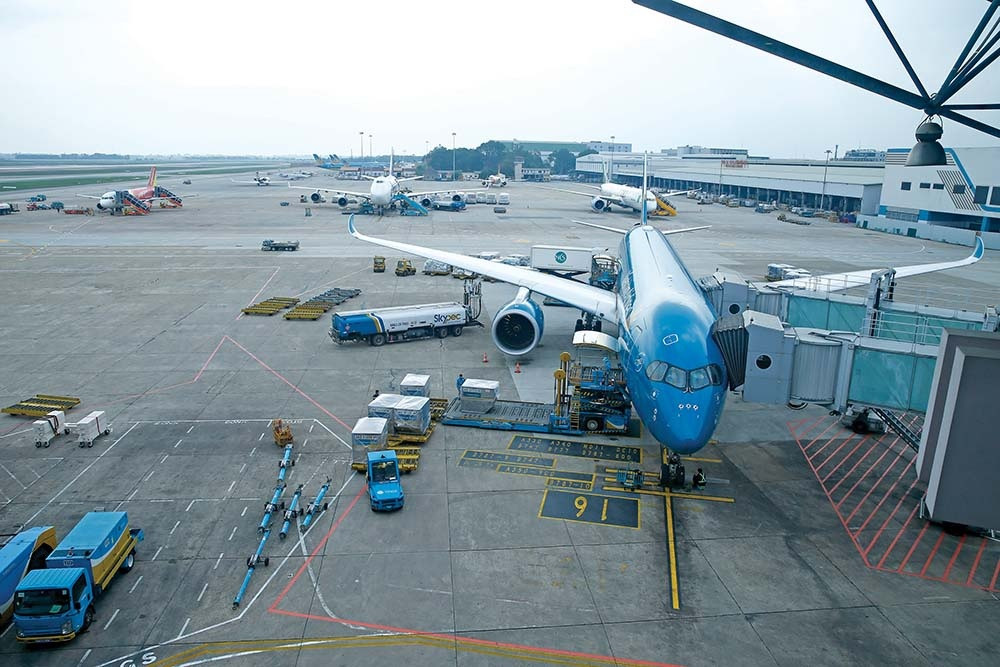
Industry experts believe that the slow recovery of the global aviation market and sliding regional demand for air travel could prolong the path to recovery of local airlines.
Dinh Viet Thang, head of the Civil Aviation Administration of Vietnam (CAAV), speaking at an event reviewing the year-to-date performance of the transport sector on October 10 in Hanoi, said, "The slower than expected recovery of Vietnam’s key markets in Japan, South Korea, and China has made a dent in the revenue and profitability of local airlines."
Thang revealed that to offset the shortfall from traditional markets, several airlines are proactively opening new routes connecting Vietnam with destinations in Australia and India, and have seen some inspiring initial results.
"However, as these two markets have been fully exploited regarding available slots, it will prove hard to scale up revenue over the next six months," said Thang.
According to figures from the Vietnam National Administration of Tourism, the total volume of visitors from Japan and South Korea in the first nine months of this year was just 80 per cent of the pre-pandemic total in 2019.
Furthermore, due to several macroeconomic issues such as inflation, sliding demand, and strict visa policies, the volume of visitors from China has recovered by just 17 per cent compared to the same period.
The slow recovery of the global markets has prompted local airlines to focus on the domestic market, which is also fraught with hardship amid reduced take up.
This is evident by the fact that in the last five months, while passenger volume was forecast to surge 15.2 per cent compared to 2019, the total growth was estimated to have been only 7.5 per cent.
“The 2023 summer peak season ended unusually early. The demand for air travel took a dip from late July, but the peak time usually lasts until the end of August, or even mid-September,” said a representative of a majorVietnamese airline.
According to CAAV, the greatest challenge to local airlines for the rest of the year will be fuel prices, predicted to soar in the coming months. The price of aviation fuel for the remaining three months of the year is expected to average around $119.30 per barrel, substantially higher than the $106.80 per barrel that most airlines had anticipated in their 2023 business plans.
Interest rates and exchange rates are also less-competitive when compared to the pre-pandemic era, further complicating financial matters for many airlines already struggling to pay back debts.
Vu Duc Bien, CEO of private carrier Vietravel Airlines, said that airlines are facing this situation because the price of air fare fails to cover costs.
“Airlines are the core of the aviation sector, but many firms are vulnerable. Meanwhile, other businesses in the ecosystem, such as airport businesses, catering, and ground services are running far more effective operations. This paradox needs to be considered, and the situation needs to be improved,” said Bien.
Bien wants the relevant state agencies to consider applying a floor-price scheme based on each airline’s operational model, and from there creating a sustainable competitive environment, while ensuring passenger interests remain a top priority.
Source: VIR